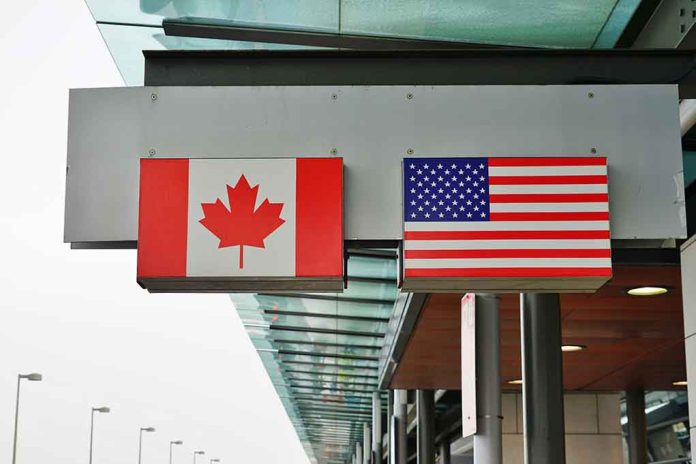
Canadian Prime Minister Justin Trudeau has announced his resignation in the face of internal conflicts and economic criticism, leaving many questions about the future of Canada’s leadership.
At a Glance
- Justin Trudeau resigns as Prime Minister amid rising criticism over his leadership and internal party conflicts.
- Trudeau will remain in office until a new leader is chosen through a Liberal Party leadership race.
- Trudeau’s resignation follows Deputy Prime Minister Chrystia Freeland’s departure over disagreements on economic policy.
- The political climate factors in U.S. President-elect Donald Trump’s trade policies and critical domestic economic challenges.
Trudeau Steps Down Amid Economic Criticism
Canadian Prime Minister Justin Trudeau steps down as the Liberal Party leader and prime minister due to mounting economic challenges such as inflation and high living costs. Pressure intensified following Finance Minister Chrystia Freeland’s resignation and her vocal opposition to Trudeau’s economic policies. The leadership vacuum presents opportunities for the Liberal Party, with Dominic LeBlanc considered a leading contender to take over as interim leader.
Under Trudeau, the Liberal Party majority has waned since his 2015 election. Factors contributing to his declining popularity include criticism over handling the immigration policy, the housing market crisis, and intricate discussions regarding U.S. trade under the incoming presidency of Donald Trump. Trudeau’s decision aims to facilitate the Liberal Party’s preparation for the next electoral challenge while also addressing internal pressures.
“For the past number of weeks, you and I have found ourselves at odds about the best path forward for Canada,” wrote in her letter of resignation, finance minister Chrystia Freeland. “Our country today faces a grave challenge.”
Leadership Transition in Liberal Party
Trudeau intends to remain as prime minister until a new leader is elected by the Liberal Party. Parliament is set to suspend until March 24 to allow time for the leadership race. Trudeau had initially planned to run for a fourth term, a historic challenge as no Canadian prime minister has won four consecutive terms in over a century. The imminent leadership contest will decide the direction of the Liberal Party as opposition parties seek a no-confidence vote, indicating a shift towards a potential spring election.
During Trudeau’s tenure, Liberal MPs had reservations about his leadership, prompting some MPs and opposition leaders to call for his resignation. The support from the New Democratic Party waned in September, threatening a vote of no confidence. Trudeau emphasizes focus on protective measures for Canadians amidst incoming U.S. trade tariffs and remains pragmatic about the ongoing leadership transition.
Economic and Political Complexities
The economic challenges resulting in the current political discourse highlight the influence of international trade dynamics, especially with potential tariffs from the U.S. under President-elect Trump. Additionally, Trudeau’s resignation aims to prepare the Liberal Party for upcoming electoral cycles amid criticism of economic management, such as budget deficits and housing shortages fueled by increased immigration.
The resignation marks a significant shift in Canadian politics, as Trudeau’s departure from office after his leadership of the Liberal Party for 11 years prompts a reflection on Canada’s political and economic future. As delegates meet to determine Trudeau’s successor, the role of opposition parties like the Conservative Party, polling at 40%, becomes increasingly pivotal, foreshadowing a highly competitive political landscape in Canada.





